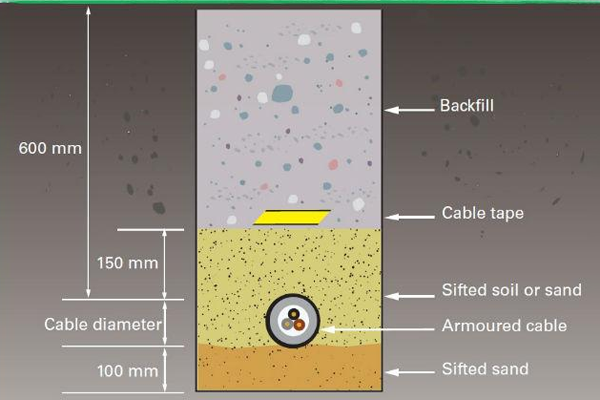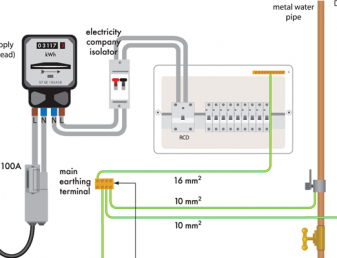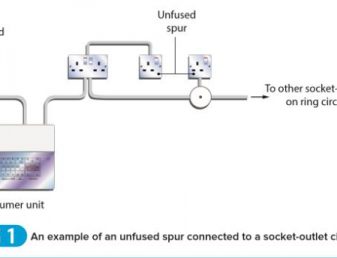This article looks at the correct procedure for installing an electrical supply to an outbuilding.
Before carrying out any new or additional installation works a contractor must determine that the supply to the installation is sufficient to meet the demands of the additional load. It must also be verified that the existing earthing and bonding arrangements are adequate (Regulation 132.16 refers).
Furthermore, the contractor responsible for carrying out the new installation work should be registered with a competent person scheme and will be required under Part P of the Building Regulations to notify the local building control.
Protection against electric shock
Typically, the protective measure for shock protection will be Automatic Disconnection of Supply (ADS) (Regulation 411.3.2 Group and Table 41.1 refers).
To achieve the required disconnection time, the protective devices for the installed circuits must meet the requirements for the maximum earth fault loop impedance (Zs) values (Section 411 of BS 7671). The supply to the garage, being a distribution circuit, will require a fault to earth to clear within 5 s (Regulation 411.3.2.3 refers).
The final circuits within the garage will generally be rated at values not exceeding 32 A, therefore, the disconnection time must not exceed 0.4 s (Regulation 411.3.2.2 refers). Furthermore, the circuit supplying socket-outlets in the garage will require additional means of protection from an RCD having the characteristics complying with Regulation 415.1.1 (that is IΔn≤30mA).
Supply from the dwelling
The conventional method for a new supply to a garage would be to utilise an existing spare way in the consumer unit. A typical garage would generally require a maximum supply of 20 A while making allowance for diversity (Regulation 311.1).
Typically, the use of circuit-breakers to BS EN 60898 or RCBOs to BS EN 61009 would provide the distribution circuit with protection against both overload and fault-current (Regulation 433.1.1 and 434.5.2 refers); this does not preclude the use of a fuse to provide overcurrent protection. The current rating (In) for such device(s) must be less than or equal to the current-carrying-capacity (Iz) of the cable. Likewise, the need for additional protection by an RCD for the cable may not be required when provided with a screened metallic covering, providing it is adequately installed. These measures do not preclude other installation methods, protective devices or the use of RCD(s)/ RCBO(s) providing additional protection.
Supply Cable
Consideration needs to be given to the environmental conditions that may exist before deciding on a suitable wiring system. The protective measures undertaken for such conditions, including amongst other things, heat, sunlight, flora and fauna may affect the current-carrying-capacity (Iz) and ultimately the size of the cable (Regulation Group 523).
Except where the cable is installed within a conduit or a duct, it must incorporate an earthed armour or metallic sheath, or both, suitable for the use as a protective conductor. Where steel wire armoured (SWA) cable buried in the ground (Fig 1) is the system choice, it must be installed in such a way as to reduce the risk of damage from any foreseeable activity such as digging (Regulation 522.8.10 refers).
Exportation of TN-C-S to the garage
The contractor must consider the potential risks from a break in the supplier’s PEN conductor where the supply is a TN-C-S system. He/she must be fully satisfied, should the garage contain any extraneous-conductive-parts, that the protective bonding conductor is sized in accordance with the incoming neutral of the supply (Regulation 544.1.1 refers). In a domestic dwelling, typically this would mean that the minimum size of bonding conductor would be 10 mm2.

Due to the practicalities for satisfying these requirements, the contractor may decide to convert the earthing arrangement within the garage to a TT system, incorporating an earth electrode (Regulation 542.1.2.3) preferably combined with an RCD (Regulation 411.5.2). If the decision is made to convert the garage into a TT system, care must be taken to ensure that no extraneous-conductive-parts forming part of the main dwelling enters the garage, such as a water pipe as shown in Fig 2.
Where such an arrangement is carried out, the supply cable would still need to be earthed at the dwelling end, but isolated from the TT earthing system within the garage.
The size of the garage earthing conductor to the electrode will need to be determined (Regulation 542.3.1 Table 54.1 refers), and that the connection to the electrode is electrically and mechanically sound (Regulation 542.3.2 refers).
Final Circuits
The contractor needs to be mindful of any expected external influence constituting a hazard to the garage electrical installation, and will need to select appropriate equipment (Regulation Group 512.2). Typically, a garage has no thermal insulation and there is the possibility that varying temperatures will result in a build-up of condensation and water collecting within accessories and luminaires (Regulation 522.3.1 refers).
For other guidance and publications please see the ELECSA website. Information about the ELECSA Domestic Installers schemes, visit www.elecsa.co.uk






